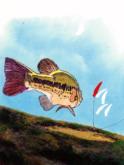Jerkbaits: Beyond the basics
Learn how and when to jerk a jerkbait
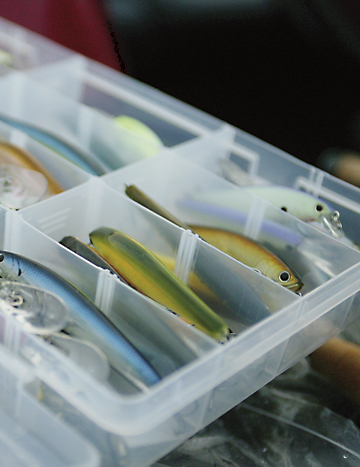
Most veteran bass anglers know that jerkbaits can be productive tools during early spring. However, knowing to use a jerkbait and knowing how and when to jerk it can be two totally different things.
Roger Stegall doesn’t jerk a jerkbait. Well, at times he jerks. However, during early spring, when the prespawn bite sizzles and big smallmouths crush jerkbaits on Pickwick Lake, Stegall “pulls” a jerkbait instead of jerking it.
“Shad are dying late in the winter and early in the spring,” said the EverStart Series pro, whom many consider to be the best smallmouth fisherman on one of the nation’s finest smallmouth lakes. “That’s why jerkbaits work so well at that time, and pulls and pauses – almost like you use when you fish a Carolina rig – make that jerkbait look more like a dying shad than anything else I have tried.”
Early spring beckons jerkbaits from tackle trays on lakes all over the country. Largemouths and smallmouths alike find suspending jerkbaits difficult to resist as they stage to spawn.
“I consider a suspending jerkbait the ultimate lure when the bass are staging prior to the spawn,” said Fujifilm pro Sam Swett. “The fish aren’t on top and they aren’t on the bottom. They want to eat as they prepare for the spawn, but the water is still pretty cold so they aren’t very active.”
Unlike Stegall, Swett works jerkbaits with sharp tugs. The aggressiveness of each jerk and the length of the pause between them varies largely by water temperature and by the stage of any front pushing through. Cool water temperatures and post-frontal conditions call for a very slow approach.
“That’s actually one of best times to fish a jerkbait – when the skies are high and the air is cold – but you have to fish it slowly,” Swett said. “I’ll give a bait a couple good twitches to get it down, and then I might leave it to suspend for 10 or 20 seconds before twitching it again.”
Swett and Stegall both look for the jerkbait bite to heat up when the water temperature gets above 45 degrees during late winter/early spring, although Swett noted that he wants it to be a “steady 45,” as opposed to hitting 45 degrees at the surface late on a sunny afternoon.
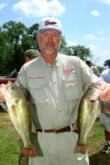 Stegall sticks with a suspending jerkbait from the time he ties on his first lure each spring until the water hits 56 or 57 degrees. After that he turns to a floating model, which he works much faster and more aggressively. Somewhere around the 50-degree mark he also transitions from slow pulls to jerks and pauses with suspending baits.
Stegall sticks with a suspending jerkbait from the time he ties on his first lure each spring until the water hits 56 or 57 degrees. After that he turns to a floating model, which he works much faster and more aggressively. Somewhere around the 50-degree mark he also transitions from slow pulls to jerks and pauses with suspending baits.
Jerkbait waters
One real key to catching jerkbait fish during early spring is fishing the bait over the right types of locations, which typically means close to spawning grounds.
Swett always looks for a bottom break in eight to 10 feet of water, where a long, tapering point drops off toward deeper water or the channel edge breaks off along a river bend. “If I can find that kind of break and it is close to an area where I know the bass are going to spawn, I want to fish a jerkbait directly over the break,” he said.
Key areas for Stegall vary depending on whether he is targeting largemouths or smallmouths. For smallmouths he looks to the edges of gravel bars – looking for drop-offs from the gravel into notably deeper water. “They’ll be in places where they can move up to feed but then get back to that deep water quickly and easily,” he said.
Largemouths will use similar areas and sometimes will be mixed in with smallies. However, Stegall also expects to catch largemouths along bluffs and over the top of riprap during early spring.
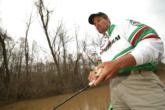 Most anglers consider jerkbaits clear-water baits and look for the clearest water they can find. However, neither Stegall nor Swett will allow a little mud to keep them from throwing their favorite early-spring offerings. “I switch to darker colors that offer an easier profile to pick out when the water is off-colored,” Swett said.
Most anglers consider jerkbaits clear-water baits and look for the clearest water they can find. However, neither Stegall nor Swett will allow a little mud to keep them from throwing their favorite early-spring offerings. “I switch to darker colors that offer an easier profile to pick out when the water is off-colored,” Swett said.
Both pros pointed toward natural colors and color patterns that feature a lot of chartreuse in them as preferences, with the chartreuse patterns getting the nod any time smallmouths are a major part of the equation or the water is stained.
Tackle considerations
Stegall does the bulk of his jerkbait fishing with baitcasting gear. He favors a 6-foot, 6-inch titanium rod that has a soft tip. “A high-speed reel is important for getting up slack between pulls and being ready if a fish hits,” he said. He spools up with 8- or 10-pound-test monofilament.
Swett varies his line size from day to day, as he once learned the hard way the huge difference line size can make. He spent half a day on Lake Seminole getting “schooled” by another angler, with both of them of them throwing the same color jerkbait over the same cover.
“He had a limit in the box and was culling, and I had one fish and had missed a couple short strikes,” Swett said. “I finally figured out that he had on 8-pound-test line, as opposed to my 12. I switched to an outfit that was spooled with 8-pound line and immediately started catching fish. We were fishing over hydrilla, and the lighter line allowed the baits to tick the grass. That made all the difference.”
Swett also varies his rod according to the bait he is fishing. For large jerkbaits, he likes a 6-foot, 4-inch rod. For the smaller jerkbaits, he goes to a 6-foot medium-action rod, finding the other rod can overpower the smaller bait and take away from its natural action.
Stegall also suggested that anglers keep spinning gear available, noting that when the wind kicks up, having a spinning rod for throwing a jerkbait makes things far easier.
Most jerkbait strikes are one of two types, Stegall said. “Either the fish will try to rip the rod out of your hands or you’ll feel a little `tap, tap,’ almost like a worm bite. Be ready when you set the hook, even on the smallest tap. On Pickwick it could be a 6- or 7-pound smallmouth.”
When bass on the beds turn finicky and won’t take traditional jigs or soft-plastic lures, Sam Swett digs deep into his bag of tricks and rigs a 3 1/2-inch jerkbait on a Carolina rig.
“I’ll cast past the bed and drag the weight across the bottom, right to the edge,” Swett said. “By just twitching the rod and then giving it line, I can make the bait dance without moving the weight. When I give it slack, it sort of backs up and starts to float up again. A bass can only stand that for so long.”
Swett typically uses a 10- to 12-inch leader, which is just long enough to keep the bait up off the bottom, and weights the rig with a 1/4- to 1/2-ounce bullet weight.
Jerkbait cousins
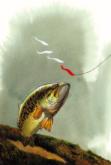 Some lures resemble jerkbaits closely enough that they accomplish some of the same purposes. Yet they are sufficiently unique to fill different niches:
Some lures resemble jerkbaits closely enough that they accomplish some of the same purposes. Yet they are sufficiently unique to fill different niches:
• Soft-plastic jerkbait – Sam Swett always has a soft jerkbait rigged when he fishes a hard jerkbait. It serves as his follow-up bait for when a bass strikes short or follows his hard jerkbait but doesn’t take it. The slow fall and unintimidating action of the plastic bait often will draw strikes from fish that won’t quite take a plug.
 • Deep minnows – Used mostly by walleye anglers for trolling, deep-diving plugs that have jerkbait-type bodies can be cranked several feet deeper than traditional jerkbaits but fished using the same basic techniques, which can provide a real advantage in deep-water lakes. Some baits, like Spoonbill Rogues, even come in suspending versions, so you can dig them 10 feet down and then jerk and stop them, just like traditional jerkbaits.
• Deep minnows – Used mostly by walleye anglers for trolling, deep-diving plugs that have jerkbait-type bodies can be cranked several feet deeper than traditional jerkbaits but fished using the same basic techniques, which can provide a real advantage in deep-water lakes. Some baits, like Spoonbill Rogues, even come in suspending versions, so you can dig them 10 feet down and then jerk and stop them, just like traditional jerkbaits.
